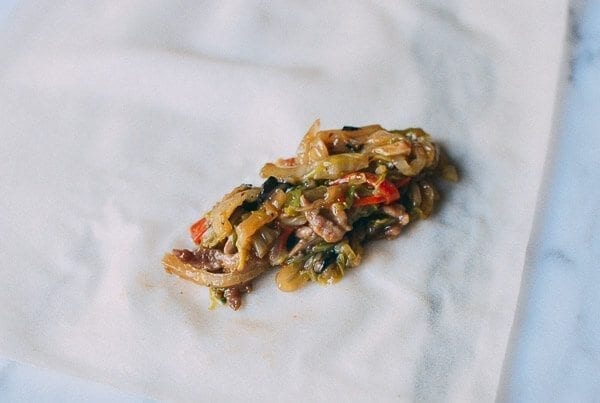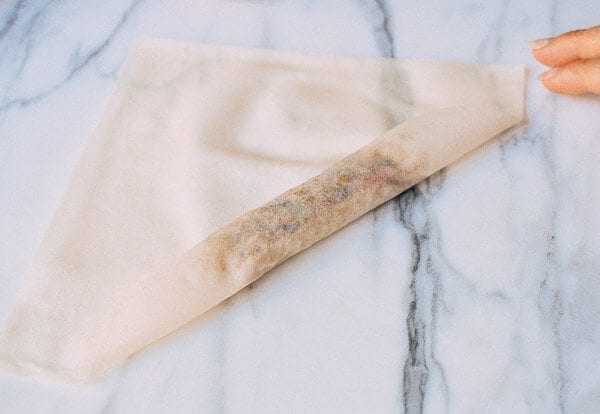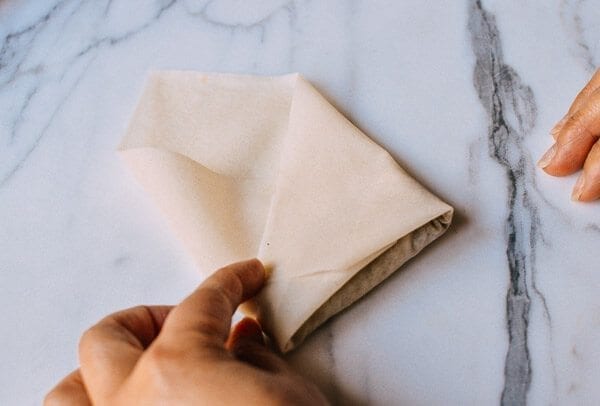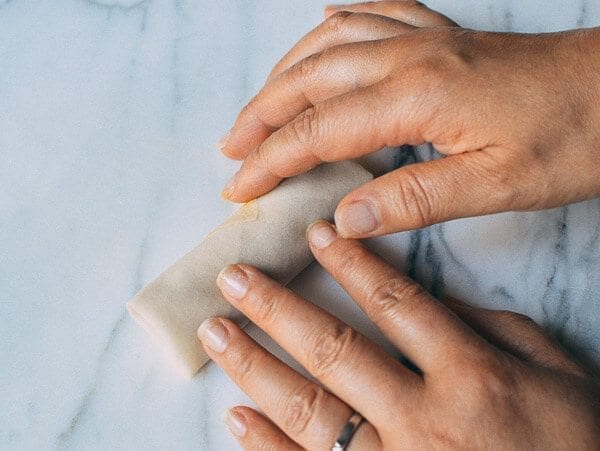When making crunchy, delicious Spring Rolls in the future, avoid purchasing the wrappers or sheets from the market. Instead, use this recipe to make spring roll sheets, also referred to as spring roll wrappers, at home. The process is quite simple; all you have to do is carefully follow each step. Go for it!.
Spring rolls are a favorite for many of us. So why not prepare the spring roll wrappers yourself and enjoy this delicious, popular snack?
The method I’ve chosen to use to make these spring roll sheets is the batter method.
For the spring roll and wrapper recipes, I looked to my notes from culinary school. I had started making them exactly this way after learning for the first time during my college years.
I have more of such recipes, still saved with me. This is a collection that I’ll always cherish.
I later attempted to make these spring roll sheets using the dough method. But I came to the conclusion that, when fried, the batter-method wrappers had a better texture than the dough-method ones.
These spring roll wrappers take a lot of time to make, so you’ll need to have plenty of time available.
But I can assure you that the effort will all be worthwhile. The day before I make the spring rolls, I usually make these wrappers.
To make these Spring Roll Sheets, I used all-purpose flour because I was unable to achieve the desired outcome with whole wheat flour. When filled with the vegetables, the whole wheat pastries broke.
These are not difficult to make, but they do take some time to complete. Simply note a few crucial details in your head before starting the process.
Learn how to make these wrappers and spring rolls like a pro by reading the advice in the sections below.
The wrappers produced by this recipe are of such high quality that they have the exact same flavor as those served at the best Chinese restaurants nationwide.
These sheets also work well for making samosas and other fried rolls, which is another benefit.
You can create between 26 and 28 sheets using these measurements. To make more, you will have to double the recipe.
You can refrigerate the wrappers for about 7 days. If you freeze them, then for a month.
What I love about this recipe:
How to Wrap Chinese Spring Rolls (春卷, chūnjuǎn)
The spring roll wrapper should be positioned on a flat surface with one of its four corners facing you; it should resemble a diamond.
Put two tablespoons of cooked, cooled, or chilled filling in each spring roll, and position it two inches from the corner that is closest to you.

Roll the corner over the filling once…

To flatten the spring roll wrapper, gently press down on both sides of the filling.
Next, fold the wrapper’s left and right sides in toward the center.

You can also do it on the diagonally, like an envelope seal, by gently brushing the cornstarch slurry (which has been stirred up with your finger) onto the opposite corner of the wrapper. Continue rolling the spring roll into a tight cigar.

Put it on a sheet pan covered with parchment paper or a wooden cutting board with the sealed side down.
Watch the video below to see this type of folding in action!
These rice paper wrappers will keep in your cupboard indefinitely. Spring roll rice paper wrappers are available in various sizes. Rolls can be small enough to bite into or large and long. Select the size that works best for you. Keep them flat and handle them gently as they are delicate.
Do not be intimidated to make your own Vietnamese rolls. If you adhere to the recommendations made in this article, they are incredibly simple to make. Using the freshest ingredients available, moistening the rice-paper wrappers until they are pliable but not too wet, and tightly rolling the bundles are the secrets to making these rolls. The versatility of spring rolls’ ingredients makes them beautiful. Asian markets and the Asian section of most supermarkets both sell rice wrappers and bottled dipping sauces.
* Mung bean flour or, for a less expensive option, ground mung beans are used to make the thin, clear noodles known as bean thread noodles. They are also known as transparent or cellophane noodles due to their appearance. Look for bean thread noodles in specialty or Asian markets, on the internet, in the ethnic or pasta section of natural food stores. They should be kept in an unopened, cool, dry cabinet for six to eight months.
Mix the rice vinegar, ginger, lemon juice, lime juice, and orange juice in a big bowl. After fifteen minutes, strain the mixture to remove the ginger and any citrus seeds. Add the shallots and slowly whisk in the olive oil. Season to taste with salt and pepper. Serve at room temperature.
